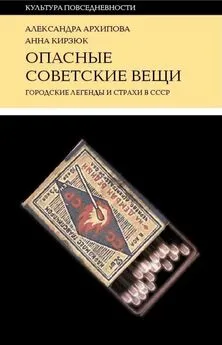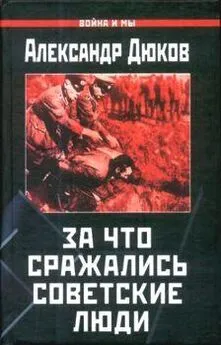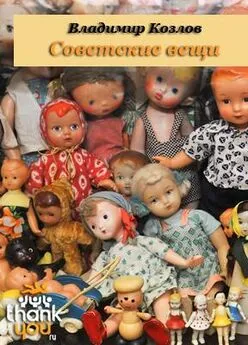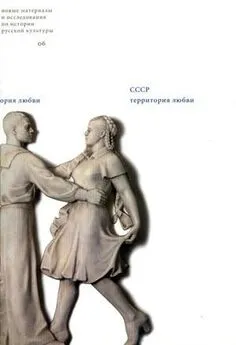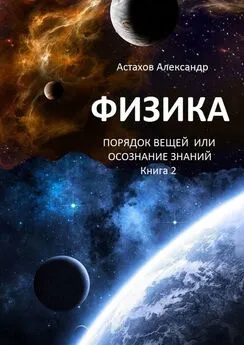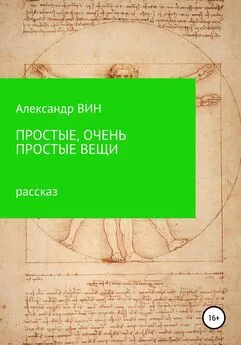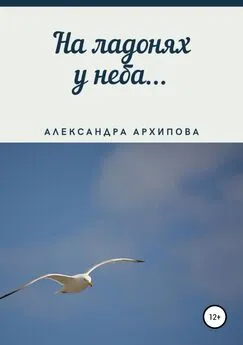Александра Архипова - Опасные советские вещи
- Название:Опасные советские вещи
- Автор:
- Жанр:
- Издательство:Новое литературное обозрение
- Год:2020
- Город:Москва
- ISBN:978-5-4448-1348-5
- Рейтинг:
- Избранное:Добавить в избранное
-
Отзывы:
-
Ваша оценка:
Александра Архипова - Опасные советские вещи краткое содержание
Опасные советские вещи - читать онлайн бесплатно ознакомительный отрывок
Интервал:
Закладка:
Finn 1954 — Finn A. Experiences of a Soviet Journalist. New York. 1954.
Flood 2019 — Flood A. Turkish government destroys more than 300,000 books // The Guardian. 2019. August 6.
Foster 1965 — Foster G. Peasant Society and the Image of Limited Good // American Anthropologist New Series. 1965. Vol. 67. No. 2. P. 293–315.
Galinsky, Whitson 2008 — Galinsky A., Whitson J. Lacking Control Increases Illusory Pattern Perception // Science. 2008. No. 322. P. 115–117.
Garrett 1996 — Garrett B. The Colorado Potato Beetle Goes to War // Chemical Weapons Convention Bulletin. 1996. No. 33. P. 2–3.
German Soap 1946 — German Soap Made from Bodies of Jews Distributed to Jewish Inmates of UNRRA Camps // Jewish Telegraphic Agency. 1946. November 26. P. 5.
Goldstein 2004 — Goldstein D. Once Upon A Virus: AIDS Legends and Vernacular Risk Perception. Logan: Utah State University Press, 2004.
Goode, Ben-Yehuda 1994 — Goode E., Ben-Yehuda N. Moral Panics: The Social Construction of Deviance. Oxford: Wiley-Blackwell, 1994.
Grzesiak-Feldman 2013 — Grzesiak-Feldman M. The Effect of High-Anxiety Situations on Conspiracy Thinking // Current Psychology. 2013. Vol. 32. No. 1. P. 100–118.
Hall et al. 1978 — Hall S., Critcher C., Jefferson T., Clarke J. Roberts B. Policing the Crisis: Mugging, the State and Law and Order. London: Macmillan, 1978.
Harvey 1980 — Harvey R. To Moscow — by way of Warsaw // Boston Globe. Boston, Mass., 1980. July 19. P. 1–2.
Hayward 2002 — Hayward J. Myths and Legends of the First World War. Sutton Publishing, Stroud, 2002.
Heath et al. 2001 — Heath Ch., Bell Ch., Sternberg E . Emotional Selection in Memes: The Case of Urban Legends // Journal of Personality and Social Psychology. 2001. Vol. 81. No. 6. P. 1028–1041.
Hanley 2003 — Hanley C. U. S. Troops, religion a fiery mix in Iraq // Kansas City Star. 2003. May 1.
Henken 2002 — Henken E. Escalating Danger in Contemporary Legends // Western Folklore. 2002. Vol. 61. No. 3/4. P. 259–276.
Hilberg 1985 — Hilberg R. The Destruction of the European Jews: The Revised and Definitive Edition. Holmes & Meier, 1985.
Hirsh 1993 — Hirsh M. Family Pictures: Maus, Mourning, and Post-Memory // Discourse. 1992–93. Vol. 15. No. 2. Special Issue: The Emotions, Gender, and the Politics of Subjectivity. P. 3–29.
Hutman 1990 — Hutman B. Nazis never made human-fat soap // The Jerusalem Post. International Edition. 1990. May 5.
Imhoff, Lamberty 2017 — Imhoff R., Lamberty P. K. Too Special to Be Duped: Need for Uniqueness Motivates Conspiracy Beliefs // European Journal of Social Psychology. 2017. No. 6 (47). Р. 724–34.
Ingemark 2008 — Ingemark C. The Octopus in the Sewers: An Ancient Legend Analogue // Journal of Folklore Research. Vol. 45. № 2. P. 145–170.
Ings et al. 2012 — Ings T., Wang M., Chittka L. Colour-independent shape recognition of cryptic predators by bumblebees // Behavioral Ecology and Sociobiology. 2012. Vol. 66. No. 3. P. 487–496.
Kalmre 2007 — Kalmre E. Two Legends from Estonia. FOAFTALE News. 2007. No. 69. http://www.folklore.ee/FOAFtale/ftn69.htm (дата обращения 20.07.2019).
Kalmre 2013 — Kalmre E. The Human Sausage Factory: A Study of Post-War Rumour in Tartu. Amsterdam: Rodopi, 2013.
Kapferer 1987 — Kapferer J. - N. Rumeurs. Le plus vieux média du monde. Paris: Editions du Seuil, 1987.
Kapferer 1989 — Kapferer J.-N. A Mass Poisoning Rumor in Europe // The Public Opinion Quarterly. 1989. Vol. 53. No. 4. P. 467–481.
Kapferer 1993 — Kapferer J. - N. The Persuasiveness of an Urban Legend: The Case of Mickey Mouse Acid // Contemporary Legend. 1993. No. 3. P. 85–102.
Kelly 2003 — Kelly J. Psychological operations unit urges Iraqis to go back to work. U. S. specialists keep the natives informed // Pittsburgh Post-Gazette. 2003. May 14.
Kerr 2010 — Kerr M. «Perambulating fever nests of our London streets»: Cabs, Omnibuses, Ambulances, and Other «Pest-Vehicles» in the Victorian Metropolis // Journal of British Studies. 2010. Vol. 49. No. 2. P. 283–310.
Klemperer 1998 — Klemperer V. Ich will Zeugnis ablegen bis zum letzten: Tagebüch 1933–1941. Darmstadt, 1998.
Koenig 1985 — Koenig F. Rumor in the Marketplace: The Social Psychology of Commercial Hearsay. Dover, Mass.: Auburn House Publishing Company, 1985.
Kõiva 1998 — Kõiva M. Bloodsuckers and Human Sausage Factories // FOAFtale News. 1998. No. 43. P. 141–150.
Kõiva 2005 — Kõiva M. Fear, Honour and Shame: Horror Fictions of the 1950s and 1960s // Folklore. 2005. Vol. 29. P. 123–152.
Kuiper et al. 1993 — Kuiper N., Martin R., Olinger L. Coping humour, stress, and cognitive appraisals // Canadian Journal of Behavioural Science / Revue canadienne des sciences du comportement. 1993. No. 25 (1). Р. 81–96.
Leitenberg 1998 — Leitenberg M. New Russian evidence on the Korean War biological warfare allegations: background and analysis // Cold War International History Project Bulletin. 1998. Vol. 11. P. 185–199.
Lifton 1987 — Lifton R. J. The Future of Immortality and Other Essays for a Nuclear Age. New York: Basic Books, 1987.
Littlefield 1925 — Littlefield W. How «Corpse factory» Story Started // The New York Times. 1925. November 29.
Lockwood 2010 — Lockwood J. Six-Legged Soldiers: Using Insects as Weapons of War. New York: Oxford University Press, 2010.
Lyon 1994 — Lyon D. The electronic eye: The rise of surveillance society. Minneapolis: University of Minnesota Press, 1994.
Macdonald 2006 — Macdonald S. Words in stone? Agency and identity in a Nazi landscape // Journal of Material Culture. 2006. Vol. 11. No. 1/2. P. 105–226.
Mayor 1995 — Mayor A. The Nessus Shirt in the New World: Smallpox Blankets in History and Legend // The Journal of American Folklore. 1995. Vol. 108. No. 427. P. 54–77.
McCauley et al. 1983 — McCauley C., Woods K., Coolidge C., Kulick W. More Aggressive Cartoons Are Funnier // Journal of Personality and Social Psychology. 1983. Vol. 44. No. 4. P. 817–823.
Messana 2011 — Messana P. Soviet Communal Living. An Oral History of the Kommunalka. New York: Palgrave Macmillan, 2011.
Miller 1991 — Miller F. Folklore for Stalin: Russian Folklore and Pseudofolklore of the Stalin Era. New York: M. E. Sharps, 1991.
Mircu 1945 — Mircu M. R. J. F. (Rein Jüdisches Fett) // Unirea. Bucharest. 1945. Vol. 1. No. 4. P. 1–2.
Morales, Fitzsimons 2007 — Morales A. C., Fitzsimons G. J. Product contagion: Changing consumer evaluations through physical contact with «disgusting» products // Journal of Marketing Research. 2007. Vol. 44. No. 2. Р. 272–283.
Mullen 1970 — Mullen P. Department Store Snakes // Indiana Folklore. 1970. No. 3. P. 214–228.
Murphy et al. 2019 — Murphy G., Loftus E., Grady R., Levine L., Greene C. False Memories for Fake News During Ireland’s Abortion Referendum // Psychological Science. 2019.
Murphy, Loftus et al. 2019 — Murphy G., Loftus E. F., Grady R. Hofstein, Levine L. J., Greene C. M. False Memories for Fake News During Ireland’s Abortion Referendum // Psychological Science. 2019. August.
Neander 2004 — Neander J. «Seife aus Judenfett» — Zur Wirkungsgeschichte einer urban legend // Vortrag auf der 28. Konferenz der German Studies Association. Washington, DC, 2004. Oktober.
Neander 2006 — Neander J. The Danzig Soap Case: Facts and Legends around «Professor Spanner» and the Danzig Anatomic Institute 1944–1945 // German Studies Review. 2006. Vol. 29. No. 1. P. 63–86.
Neander 2010 — Neander J. Media and Propaganda: The Northcliffe Press and the Corpse Factory Story of World War I // Global Media Journal. 2010. Vol. 3. No. 2. P. 67–82.
Neander 2013 — Neander J. The German Corpse Factory: The Master Hoax of British Propaganda in the First World War. Saarbrücken: Saarland University Press, 2013.
Neander 2016 — Neander J. «Symbolically burying the six million»: post-war soap burial in Romania, Bulgaria and Brazil // Human Remains and Violence. 2016. Vol. 2. No. 1. P. 23–40.
Neulander 2006 — Neulander J. Folk taxonomy, prejudice and the human genome: using disease as a Jewish ethnic marker // Patterns of Prejudice. 2006. Vol. 40. No. 4–5. P. 381–398.
Oring 2014 — Oring E. Memetics and Folkloristics: The Applications // Western Folklore. 2014. Vol. 4. No. 73. P. 455–492.
Panczová 2017 — Panczová Z. The Image of the West in Conspiracy Theories in Slovakia and Its Historical Context // Folklore (Estonia). 2017. No. 69 (Oct.). P. 49–68.
Parsons et al. 1999 — Parsons S., Simmons W., Shinhoster F., Kilburn J. A test of the grapevine: an empirical examination of conspiracy theories among African Americans // Sociological Spectrum. 1999. Vol. 19. No. 2. P. 201–222.
Peirce 1868 — Peirce C. New List of Categories // Proceedings of the Аmerican Academy of Arts and Sciences. 1868. No. 7. Р. 287–298.
Pike 1967 — Pike K. L. Language in Relations to a Unified Theory of Human Behavior. 2 ed. The Hague: Mouton & Co, 1967. P. 37–72.
Pisik 2003 — Pisik B. Rumors become insidious in Iraq // Washington Times. 2003. June 9.
Plamper 2001 — Plamper J. Abolishing Ambiguity: Soviet Censorship Practices in the 1930s // Russian Review. 2001. Vol. 60. No. 4. P. 526–544.
Pocius 1991 — Pocius G. L. It’s from Place to Belong: Community Order and Everyday Space in Calvert, Newfoundland. McGill Queen’s University Press, 1991.
Ponsonby 1928 — Ponsonby A. Falsehood in war-time: Containing an assortment of lies circulated throughout the nations during the great war. New York: E. P. Dutton & Co, 1928.
Ramachandran, Hirstein 1999 — Ramachandran V., Hirstein W. The Science of Art: A Neurological Theory of Aesthetic Experience // Journal of Consciousness Studies. 1999. Vol. 6. № 6–7. Р. 15–51.
Regamey 2012 — Regamey A. Comparing Violence: Organ Theft Rumours in Chechnya and Latin America // Laboratorium. 2012. Vol. 4. No. 3. Р. 42–66.
Читать дальшеИнтервал:
Закладка:
